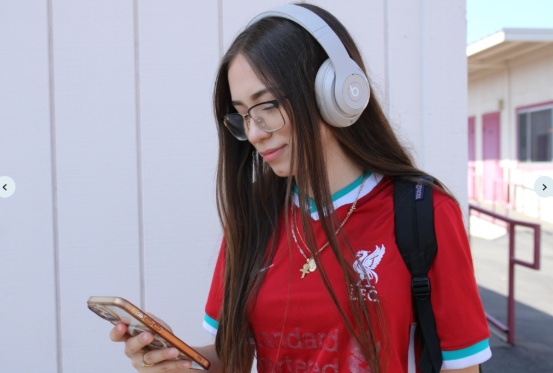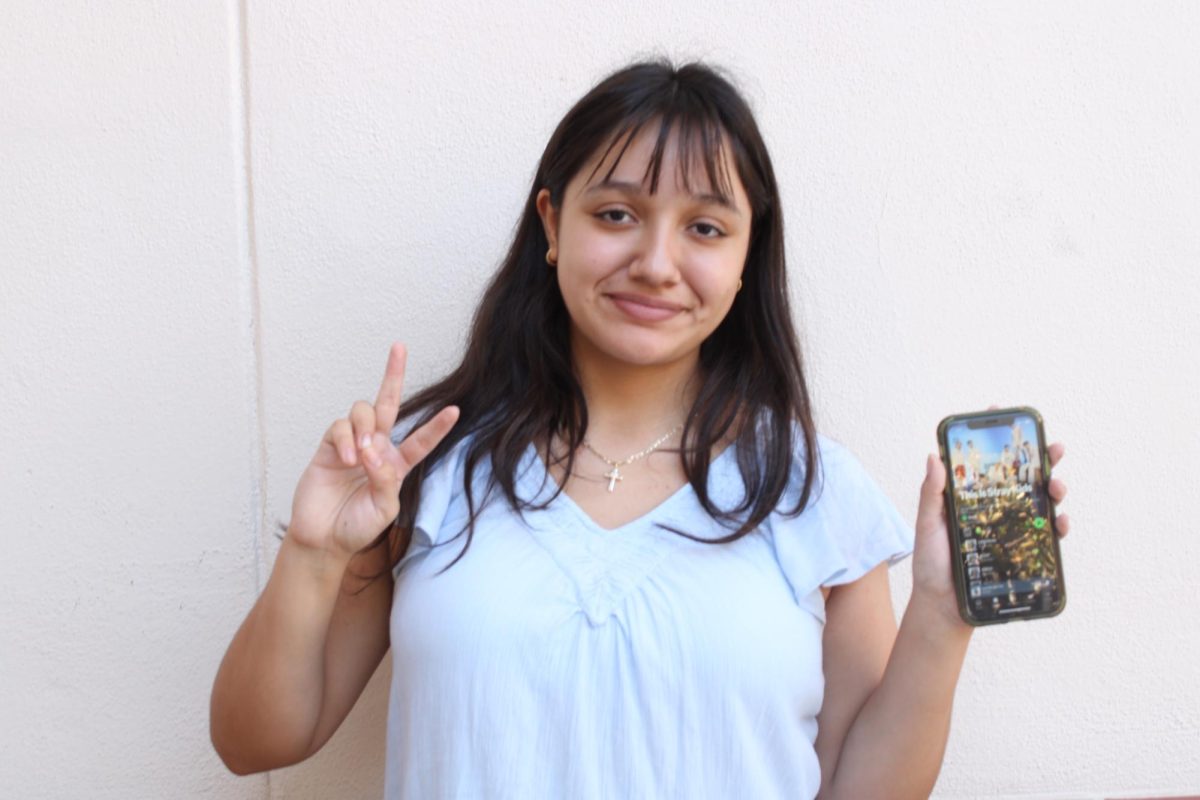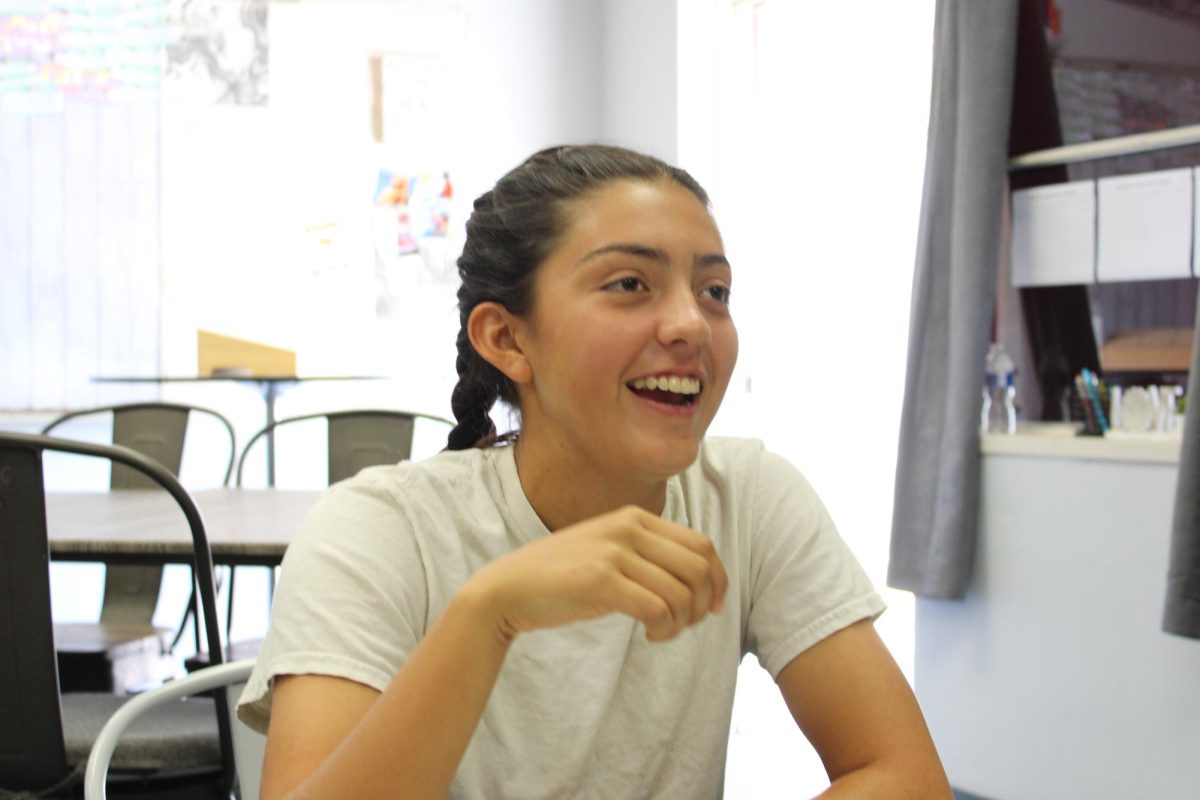
Correction: the name of Eric Sanchez was incorrectly spelled as Erik Sanchez. We apologize for the error.
As every person claims their place in the world, they find passions and a stronger sense of self. Distinctively, twins experience this with someone they share a unique bond with from the womb. As their personalities develop, twins may struggle to define themselves as separate individuals. Assumptions and generalizations add further challenges to their journey of self-discovery.
In a 2023 Springer Nature article, the reading platform of choice for hundreds of thousands of researchers worldwide, the perceived “special bond” shared only between twins could lead adults to treat them as if they were the same person. These social myths pressure twins to conform, posing additional challenges for them in navigating their own individuality.
Senior Lisa Villeda found that people often assume twins should dress similarly. On social media, parents will post pictures of their young twins in identical outfits. This aesthetic is not only convenient for parents but also suggested to them for its visual appeal in movies such as “The Parent Trap” starring Lindsay Lohan or “The Suite Life of Zack & Cody” starring Dylan and Cole Sprouse.
“We’re obviously very different people. We’re twins, but we’re also just our own person. Dressing alike? I don’t like doing that. I have my own sense of fashion or even my sense of music,” Lisa Villeda said.
Sophomore Jacky Zhou faces assumptions about his behavior from others based on the fact that he is a twin. He hears comparisons of his and his brother’s abilities, expecting them to display similar traits due to their biological likeness. This is a way in which a twin’s individuality may be overshadowed, since the assumption is that twins should be alike in every manner, including academic performance.
“There’s one thing–there’s multiple things that they bring up: ‘If I’m good at math, then he’s good at math,’ things like that,” Jacky Zhou said.
A 2015 PubMed Central study, a trusted U.S. government database, twin studies of more than 17,800 traits from more than 2,700 publications over 50 years showed that genetics explained about 49% of variation in human traits, while 51% could be attributed to environmental factors.
Junior Annika Sangadeo feels that she naturally shares the love of soccer with her sister, Isla, along with the different things they like doing in their day-to-day lives.
“We’re pretty close just in general… finding interests is kind of the same for both of us,” Annika Sangadeo said.
Senior Sophia Villeda similarly reflects on sharing common interests. She cited common activities they do together, such as track and cross country, as a reason why they’re united in their passions.
“I feel like it’s more so the same because we’re interested in the same things. Our sport–we play cross country and we do track, so we’re more into more of the same things,” Sophia Villeda said.
Yet where commonalities lie, there are also aspects of these sisters’ interests that remain distinct. They both share fashion as a part of themselves that stays unique; each choosing to express their own individual color and voice in their daily outfits.
“I feel like we’re both very different in our styles. I feel like I just, more… streetwear and darker colors, and she’s more… brighter colors,” Sophia Villeda said.
Lisa Villeda finds ways to engage in creative interests differently from her twin sister. To her, her artistic pursuits showed her individuality–ways she could exhibit her own special flair.
“I would say painting things, finding new inspo or even my outfits. I like finding different types of ideas–clothes ideas–that I can put together that just make me, me,” Lisa Villeda said.
Jacky Zhou has more varied interests than his brother Jackson, ranging from volleyball to math. He feels the reason he developed an interest in such a wide breadth may have to do with his sibling, but of course, it is still on the part of his natural interest in the subjects themselves.
“Maybe it was because I wanted to be different from my twin brother, because we’re twins. But, I’m doing it more out of interest,” Jacky Zhou said.
Isla Sangadeo took direct inspiration from her twin as a way to admire and show her love. She feels that their bond has played a big role in their developing similar interests.
“Sometimes I’ll copy what she does… as a way that I look up to her, it’s like guidance for me?” Isla Sangadeo said.
Senior Eddie Sanchez thinks that part of the reason why he and his brother Eric have some of the same interests, such as enjoying watching soccer, is that his twin looks up to him.
“I feel like he copies me, but probably because… he looks up to me or something,” Eddie Sanchez said.
A 2024 Northeastern Global News report on a study led by professor Laurie Kramer found that twins in college often make similar academic or career choices while still striving for individuality. Their competition is typically supportive. Their bond provides strength as they work toward being recognized as unique individuals.
Common interests make an impact on the way twins interact. Sharing common interests allows for the sharing of different viewpoints that enable both sides to appreciate the things they enjoy even more.

“I think it just made us closer, ‘cause if I like something and she’s also on the same page as I am, then it’d be like, ‘Oh, we can, like… see different perspectives,’ and somehow that makes it better, I feel like,” Lisa Villeda said.
Despite their differences, for these twins, the formation of their identities was measurably impacted by their siblings. Respecting different preferences and inclinations remains important within twin relationships, as it builds connection and unity. The bond between family, no matter their different interests, will always be valuable.







